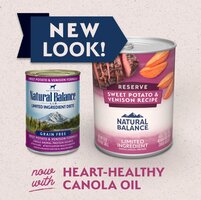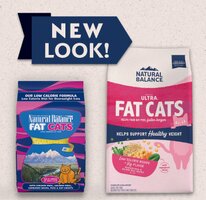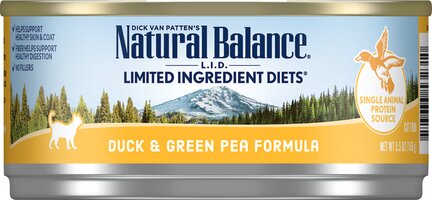
Whole Paws vs. Natural Balance
In this comparison article for Whole Paws vs Natural Balance, we'll highlight the key differences between these two pet food brands. To properly compare Whole Paws and Natural Balance, we'll use up-to-date nutritional and price information.
There are many factors to consider when choosing the best pet food brand for your pet. Factors such as ingredient quality, guaranteed analysis, product safety, brand history, and cost are among the most important factors to consider.
Throughout this Natural Balance vs Whole Paws comparison, we've utilized average data to make general comparisons. If you'd like to see individual product reviews, visit our Whole Paws Review Page or Natural Balance Review Page.
Guaranteed Analysis: Natural Balance vs. Whole Paws
According to AAFCO, all pet food labels must provide a guaranteed analysis of nutrient content. The analysis must provide guaranteed minimum percentages of crude protein and crude fat, and maximum percentages of crude fiber and moisture.
All percentages used in this comparison are averages reported on a dry matter basis.
Whole Paws Dog Food vs. Natural Balance Dog Food
| Dry Dog Food | Whole Paws | Natural Balance |
| Crude Protein | 29.8% | 27.6% |
| Crude Fat | 17.3% | 14.4% |
| Crude Fiber | 3.3% | 5.2% |
| Wet/Canned Dog Food | Whole Paws | Natural Balance |
| Crude Protein | 40.5% | 39.7% |
| Crude Fat | 23.6% | 20.5% |
| Crude Fiber | 7.5% | 8.5% |
Crude Protein Comparison For Dog Food
Dogs require twenty-two amino acids to sustain life. Twelve of these amino acids are synthesized naturally, the remaining ten are consumed. Protein is the nutrient which provides some or all of these ten essential amino acids.
If you look at the average percentages of crude protein, you'll notice that Whole Paws typically guarantees 2.17% more protein. This is a fairly small difference between Whole Paws and Natural Balance, but still worth mentioning. For wet dog foods, Whole Paws and Natural Balance provide roughly the same amount of protein.
Crude Fat Comparison For Dog Food
Like protein, fats are an essential part of a dog's body. Fats are needed for the proper development and function of the canine body.
According to our data, Whole Paws guarantees 2.98% more fat than Natural Balance. Although this difference is relatively small, it's still a notable difference. In addition, Whole Paws wet dog foods also provide more fat than Natural Balance wet foods.
As you can see, Whole Paws and Natural Balance guarantee a similar amount of crude fiber. With regards to wet dog food, Natural Balance and Whole Paws also provide roughly the same amount of crude fiber.
Whole Paws Cat Food vs. Natural Balance Cat Food
| Dry Cat Food | Whole Paws | Natural Balance |
| Crude Protein | 33.3% | 36.8% |
| Crude Fat | 18.5% | 14.3% |
| Crude Fiber | 7.0% | 5.5% |
| Wet/Canned Cat Food | Whole Paws | Natural Balance |
| Crude Protein | 46.1% | 46.7% |
| Crude Fat | 23.3% | 20.2% |
| Crude Fiber | 5.5% | 7.1% |
Crude Protein Comparison For Cat Food
Cats require twenty-two amino acids to sustain life. Eleven of these amino acids are synthesized naturally, the remaining eleven are consumed. Protein is the nutrient which provides some or all of these eleven essential amino acids.
There is a small difference between the protein content of Natural Balance and Whole Paws. We can see that Natural Balance guarantees about 3.46% more protein than Whole Paws. For wet cat foods, Natural Balance and Whole Paws provide roughly the same amount of protein.
Crude Fat Comparison For Cat Food
There are many ways in which dietary fat contributes to the overall health of our feline friends. Here is a short list of benefits provided by fats (not exhaustive):
- Help transport nutrients across cell membranes
- Fats produce metabolites, which help control inflammation
- Maintain healthy blood pressure
- Slow the growth of yeast infections
- Fats improve the taste/texture of food.
The table shows that Natural Balance provides far less fat than Whole Paws. The difference in fat content is roughly 4.20%. For wet cat foods, Whole Paws typically provides a little more fat (about 3.09% more).
Natural Balance and Whole Paws both provide roughly the same amount of crude fiber. With regards to wet cat food, Natural Balance and Whole Paws also provide roughly the same amount of crude fiber.
Whole Paws Pet Food Ingredients vs. Natural Balance Pet Food Ingredients
Whole Paws and Natural Balance both use the following controversial ingredients in many of their products:
Here are some of the controversial ingredients used only by Whole Paws.
Here are some of the controversial ingredients used only by Natural Balance.
We believe that certain pet food ingredients are linked to adverse health affects; these ingredients are classified as harmful.
Here are some of the harmful ingredients used only by Natural Balance.
Product Safety: Recall History of Whole Paws & Natural Balance?
According to our records, Whole Paws has never been recalled.
Natural Balance has been recalled 6 times.
- July 21, 2007: ofbotulinum toxin
- May 4, 2012: Salmonella
- June 18, 2010: Salmonella
- April 27, 2007: Melamine
- April 17, 2007: Melamine
- July 3, 2020: elevated levels of choline chloride
Disclosure: PawDiet has an affiliate relationship with stores featured (or linked-to) in this article. We are compensated for referring customers. Thank you for shopping with our retail partners!
Where To Buy Whole Paws Pet Foods
You can purchase Whole Paws pet foods from the following stores:
Where To Buy Natural Balance Pet Foods
You can purchase Natural Balance pet food products from these retailers:




Type Of Pet Foods Available
| Product | Whole Paws | Natural Balance |
| Dry Dog Food | 5 Recipes | 39 Recipes |
| Wet Dog Food | 7 Recipes | 27 Recipes |
| Dog Treats | 8 Treats | 33 Treats |
| Dry Cat Food | 3 Recipes | 16 Recipes |
| Wet Cat Food | 8 Recipes | 43 Recipes |
| Cat Treats | None | None |
Top Rated Whole Paws Recipes
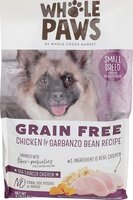
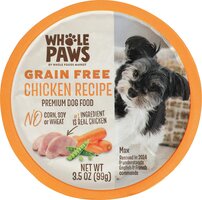
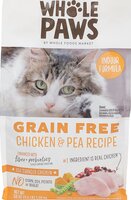
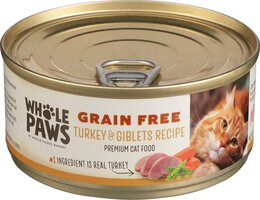
Top Rated Natural Balance Recipes

